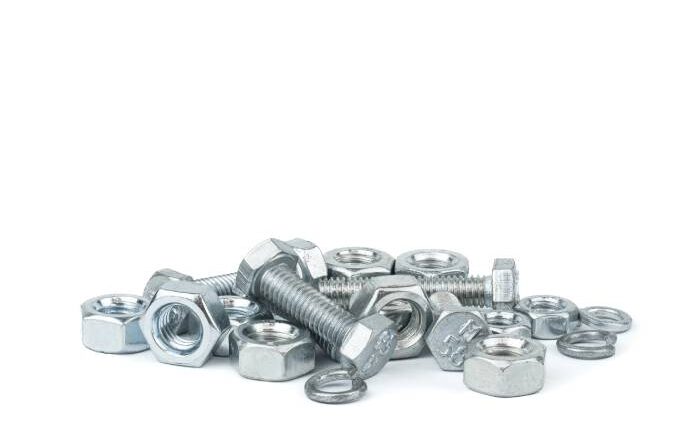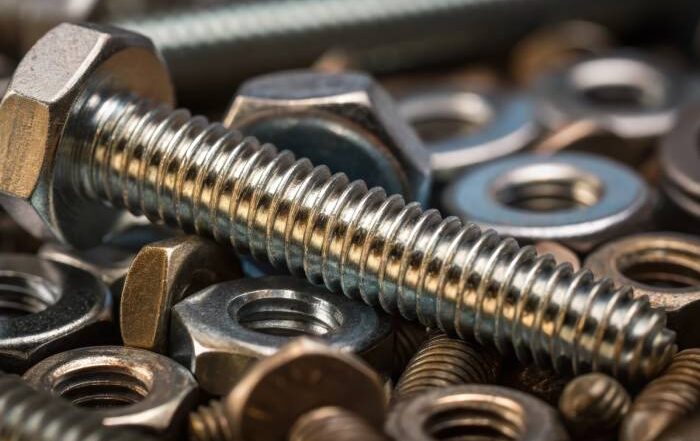
Date Posted:
April 3, 2017
Post Author:
Marsh Fasteners
Categories:
Understanding the difference between 18-8 vs 304 vs 316 stainless steel is crucial for selecting fasteners that meet your durability and corrosion resistance needs. Many people mistakenly believe that all stainless steel is the same. This is not true. The type and grade of stainless steel fasteners that you invest in will determine just how corrosion resistant they are and, of course, how durable and long-lasting you can expect them to be. Whether you are buying nuts, bolts, nails and screws, rivets and pins or anchoring systems, you must take the environment into consideration.
Professionals must know what the difference is between 18-8 vs. 304 vs. 316-grade stainless steel. We’re going to help simplify it for you. Here’s what you need to know about each of these three different grades:
18-8 Grade Stainless Steel
This refers to the 300 series of stainless steel with chromium and nickel content in percentages. Specifically, 18-8 grade stainless steel contains 18% chromium and 8% nickel, which contribute to its durability and corrosion resistance. This type of stainless steel performs better against corrosion compared to the 400 series. However, 18-8 stainless steel can only be hardened through cold working, and it retains its non-magnetic properties due to its austenitic structure.
Pros and Cons of 18-8 Grade Stainless Steel
As mentioned, 18-8 stainless steel is renowned for its excellent corrosion resistance, making it suitable for many environments. However, it can show signs of corrosion when exposed to chlorides, such as salt, which is not ideal for marine applications. On the positive side, 18-8 stainless steel properties include impressive strength, the ability to bend and mold without losing durability, and is highly cost-effective. This type of stainless steel also requires minimal maintenance, making it an attractive option for various applications. Additionally, 18-8 stainless steel yield strength is significant, ensuring long-lasting performance in most environments.
Application of 18-8 Grade Stainless Steel
18-8 grade stainless steel is utilized within a number of different industries, including the wastewater treatment, restaurant and catering, medical, and transportation industries. It is not suitable for marine applications.
304 Stainless Steel
304 stainless steel is a basic alloy known for its versatility and durability. It cannot be heat-hardened and is also non-magnetic, similar to 18-8 stainless steel. While this grade of stainless steel doesn’t rust, it can tarnish over time. Its high resistance to various chemicals and acids makes it a popular choice for diverse applications. Compared to 18-8 stainless steel, 304 stainless steel offers comparable performance but stands out for its slightly enhanced resistance to corrosive elements.
Pros and Cons of 304 Stainless Steel
The primary benefit of 304 stainless steel is its reputation as one of the strongest and most reliable mild steels on the market. It boasts superior corrosion resistance compared to some other stainless steel grades, although it remains vulnerable to saltwater exposure, much like 18-8 stainless steel. However, 304 stainless steel vs 18/8 stainless steel comparisons show that 304 is easier to mold and shape, making it highly versatile. Despite its susceptibility to corrosion in marine environments, 304 stainless steel’s affordability and adaptability make it an excellent choice for many industries.
Application of 304 Stainless Steel
304 stainless steel is widely used to manufacture everyday items, including sinks, pots, pans, and tables. Its versatility and durability make it a popular choice across various industries, particularly in the dairy, food, and brewing sectors. Comparing the 18/8 vs 304 stainless steel, 304 grade offers slightly better resistance to corrosive environments while retaining ease of fabrication. Although it lacks the molybdenum found in 316, its affordability and tensile strength ensure reliability in most applications. For less demanding environments, 18-8 stainless steel can also serve as an effective equivalent.
316 Stainless Steel
316 stainless steel offers superior tensile strength and enhanced corrosion resistance, particularly in harsh environments. The primary distinction between 304 and 316 stainless steel lies in the addition of molybdenum (up to 3%) in 316, which significantly improves its ability to resist pitting and saltwater corrosion. This grade is non-magnetic and must be hardened through cold working. While 316 stainless steel is more durable than 304, it is also less malleable and substantially more expensive. Its unique properties make it ideal for demanding applications.
Pros and Cons of 316 Stainless Steel
316 stainless steel boasts a higher strength and durability than 304 stainless steel. It also has a higher level of corrosion resistance, including when exposed to salt water. It performs well against pitting and is also resistant to caustic chemicals. As mentioned above, however, 316 stainless steel is less malleable than 304 stainless steel. It is also substantially more expensive.
Application of 316 Stainless Steel
Due to its higher level of corrosion resistance, especially in terms of salt water, 316 stainless steel is unsurprisingly used most frequently for marine applications. It is also often used in the manufacture of chemical processing equipment, as well as various heat exchangers and furnace parts.
Find All the Fasteners You Need at Marsh Fasteners
Choosing the correct grade of stainless steel is essential to ensuring that your product is of the right quality and that no damage is experienced along the way. Now that you know the difference between 18-8 vs 304 vs 316 stainless steel, you can make a more informed choice for your application in terms of fasteners. Contact us via email or telephone for more information and advice on our stainless steel fasteners at Marsh Fasteners today. Let us help you find the perfect solution to fit your needs and understand the difference between 18-8 vs 304 vs 316 stainless steel fasteners.



